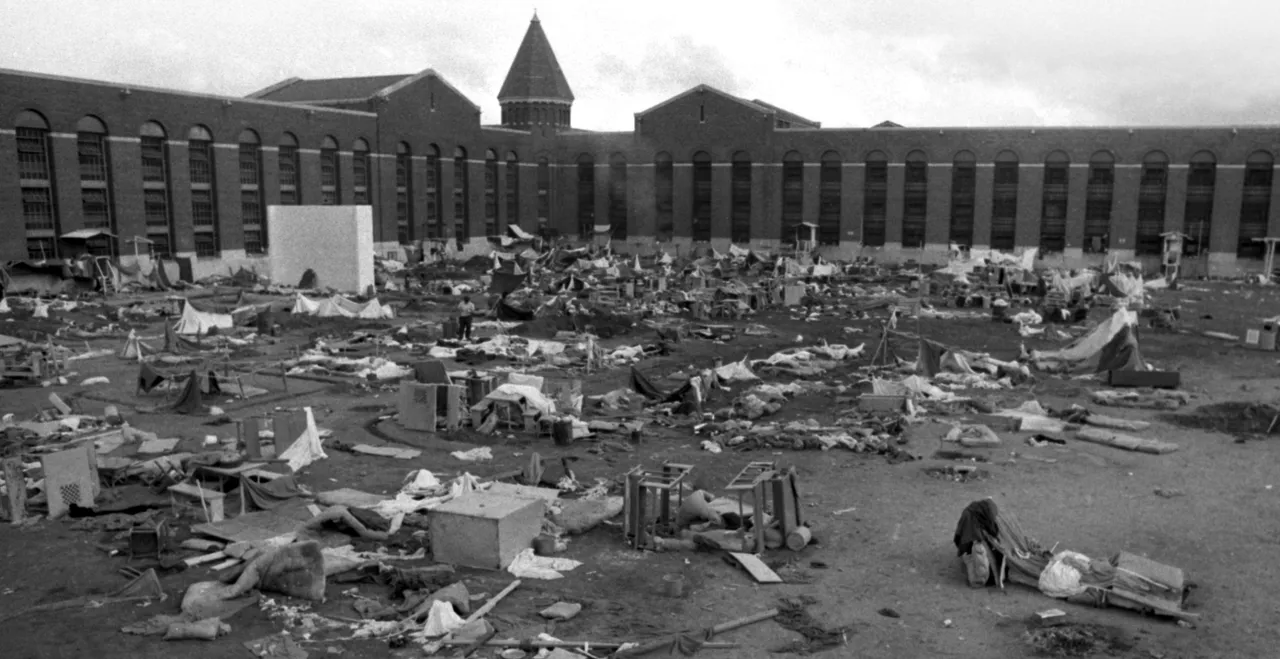The Attica prison revolt of 1971 is known as one of the most violent prison uprisings in American history.
From September 9 to September 13, inmates at New York’s Attica Correctional Facility seized control of the prison and took members of the staff hostage.
They were demanding better living conditions. After four days of tense negotiations, state police stormed the prison, resulting in the deaths of 29 inmates and 10 staff members.
According to the McKay Commission, this was one of the bloodiest encounters in America since the Civil War, surpassed only by the Indian massacres of the late 19th century.
The Revolt
In the late 1960s and early 1970s, American prisons saw a rise in disturbances.
In New York alone, there were riots and partial takeovers at the Manhattan House of Detention in August 1970 and Auburn Correctional Facility in November 1970.
Though these incidents didn’t match the scale of the Attica uprising, they contributed to the growing tensions at Attica.
According to the source, by September 1971, the prison was overcrowded, holding 2,250 inmates despite being designed for 1,600.
Racial tensions also played a significant role. The inmate population was about 55% African American and 10% Hispanic, while all the guards were white.
The Catalyst
The uprising began on September 8 when a minor altercation between inmates was misinterpreted by guards. This incident led to disciplinary confinement for two inmates, sparking widespread anger.
The next day, when a lieutenant tried to reassert order, he was attacked. Inmates then gained control of the central area of the prison, taking guards hostage.
They brought the 38 hostages to the D yard and organized themselves into a security force and a negotiating committee.
The Negotiations
Inmates quickly listed their grievances and demands. Russell Oswald, New York’s commissioner of corrections, began direct negotiations with them on September 9.
Miscommunications led to a breakdown in talks. On September 10, an “observers committee” including political leaders and activists arrived as intermediaries.
Despite continued negotiations, by September 12, Governor Nelson Rockefeller and Oswald decided that the situation couldn’t be resolved peacefully.
The Retaking of Attica
On September 13, Oswald issued a final ultimatum. In response, inmates threatened the lives of eight blindfolded hostages.
The situation escalated when tear gas was dropped into the yard, and state police stormed the prison, firing indiscriminately.
When the dust settled, 10 hostages and 29 inmates were dead or dying. Attica was soon secured, and the inmates were moved back into their cells.
The Aftermath
Gerald Houlihan, the public information officer, falsely claimed that the hostages had been killed by inmates, leading to the brutal treatment of the prisoners.
Autopsies later revealed that all hostages had been killed by police gunfire. In the years following the revolt, 62 inmates faced charges for over 1,200 criminal acts, and one state trooper was charged with a crime.
An investigative commission, led by Robert McKay, criticized the handling of the crisis, particularly rebuking Governor Rockefeller for not visiting the prison before the retaking.
Read more news:
- Biden Campaign Mobilizes Across Georgia Ahead of Debate Clash
- Kristi Noem Denies Formal Vetting for Trump’s VP, Focuses on Winning Strategy
In 1974, Governor Hugh Carey attempted to resolve the matter by pardoning seven inmates and commuting one sentence.
Disciplinary action against police officers was also dismissed. Civil suits for excessive force continued for years, culminating in a $12 million settlement in 2000.

